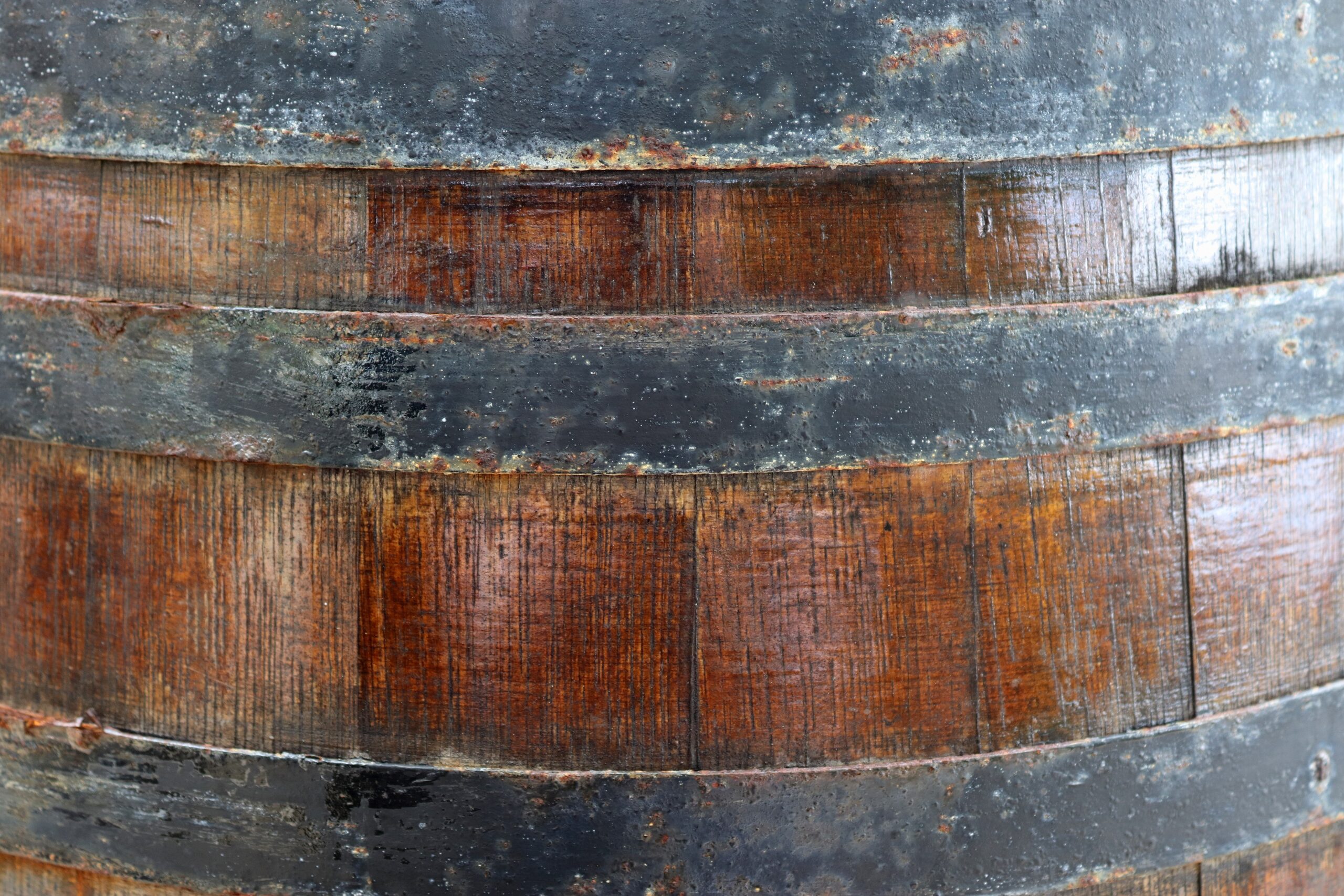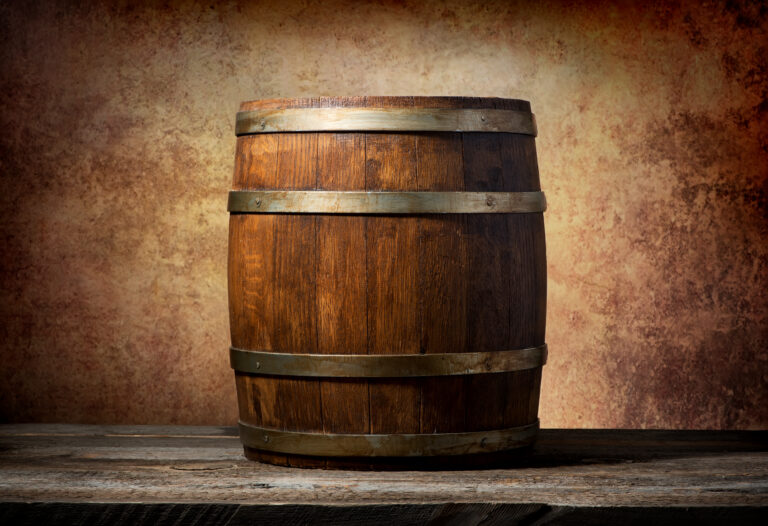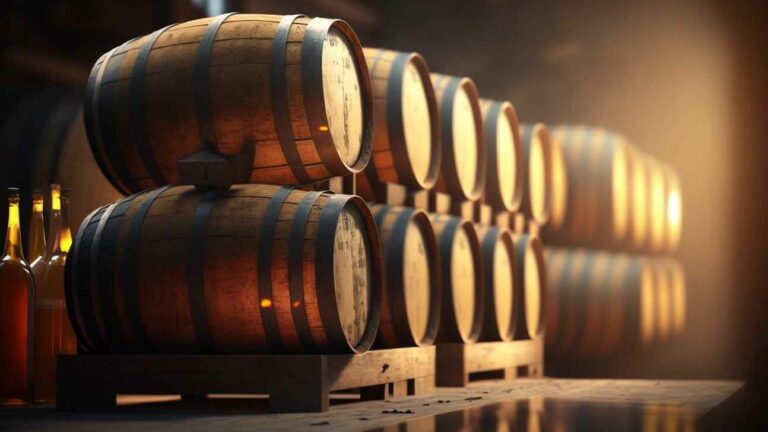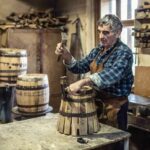Ever wondered what happens to those sturdy oak barrels after they’ve cradled fine whiskey for years? Do they just get tossed aside, their purpose served? Not a chance! While whiskey barrels won’t last forever, with a little TLC and smart storage, they can certainly have a long, useful second life. If you’re someone who appreciates premium spirits, you probably also care about sustainability and true craftsmanship. The good news is, these whiskey barrels can absolutely avoid rotting and keep making a positive impact on the world. Let’s dig into the real story of what happens to whiskey barrels once they’re emptied.
The Lowdown on Whiskey Barrels
Even though whiskey barrels are typically crafted from robust oak, they’re not invincible. These barrels, essential for aging whiskey and other spirits, are designed to be porous. This allows the liquid to soak up those incredible flavors and aromas from the wood over time. But there’s a flip side: this porosity also means air and moisture can sneak in, and that’s where the trouble begins for the oak barrel.
When oxygen gets cozy with the wood, it kicks off oxidation and decay. Throw in high humidity, and you’ve got the perfect breeding ground for rot and mold. Distillers are constantly monitoring barrel conditions to prevent spoilage and ensure their whiskey develops perfectly.
Once a barrel has released its aged contents, the wood continues its natural deterioration. Whiskey barrels stored in a damp cellar or warehouse are far more likely to rot, developing soft spots and becoming unusable. The secret to longevity? Proper storage in a cool, dry spot, far from direct contact with soil or standing water.
Regular maintenance, like cleaning, drying, and even re-coating the inside of the barrels, significantly slows down degradation. Some distillers even reuse barrels a few times before retiring them. But no matter how carefully they’re handled, every barrel will eventually give out as the wood naturally loses its integrity.
The good news is, most whiskey barrels fulfill their primary purpose long before rot becomes an issue. With the right conditions and care, an oak barrel can last for several years – plenty of time to impart that distinctive oak character to your favorite hooch. But once their work is done, it’s smarter to retire these aging vessels before any serious wood decay sets in.
What Goes Into a Whiskey Barrel
The barrels that cradle and age whiskey are almost always made from oak, typically American white oak or European oak. Oak wood is perfect because it’s porous enough for the whiskey to absorb flavor from the wood, yet dense enough to prevent leaks.
Crucially, these oak barrels are charred on the inside. This exposes the wood grains, and it’s this char layer that interacts with the whiskey as it ages, adding those signature smoky notes and amber hues. The natural compounds found in oak – like lignins, tannins, and vanillins – also seep into the whiskey, contributing delightful flavors of vanilla, cinnamon, and clove.
Most whiskey barrels are handcrafted and can be quite an investment. To manage costs, distillers often reuse barrels, but each reuse offers a slightly diminished flavor contribution. Typically, after 3-5 uses, these barrels are retired from active whiskey aging.
Barrel maintenance is crucial for preventing rot. When empty, whiskey barrels should ideally be kept in a humid environment to prevent the wood from cracking. Periodic treatments with paraffin or silicone can also help seal and protect the wood. With proper care, these wooden vessels can last for decades.
So rest easy, your favorite bourbon or single malt won’t develop a rotten taste from the barrels. Distillers go to incredible lengths to craft oak barrels that enhance flavor without spoilage, ensuring you can always savor that smooth, oak-infused taste of perfectly aged whiskey. Kanpai!
Why Wooden Barrels Go Bad: Factors That Cause Rot
Several factors can lead to wooden whiskey barrels rotting over time. Understanding these is key to barrel preservation.
Moisture
Too much moisture is the number one enemy. When whiskey barrels are overfilled or stored in persistently damp conditions, the wood swells and becomes highly susceptible to rot and mold. They absolutely need a controlled environment with moderate humidity. High humidity coupled with heat creates the ultimate breeding ground for harmful fungi and bacteria, leading to wood decay.
Oxygen Exposure
Exposure to oxygen also dramatically speeds up decay. Barrels that aren’t properly sealed will allow oxygen to interact with the wood and any remaining liquids inside. This oxidation causes the wood to break down, opening the door for rot and potentially spoiling the whiskey. Keeping oak barrels tightly sealed and, when not in use, storing them upside down can significantly limit oxygen exposure.
Age
As whiskey barrels age, the wood naturally becomes more porous and vulnerable to rot. Most whiskey barrels are actively used for 3 to 5 years before they’re retired from primary aging. Reusing barrels multiple times also increases the chances of rot because the wood’s integrity diminishes slightly with each cycle. Older, frequently reused barrels should be monitored closely for signs of deterioration.
Proper storage conditions, minimizing oxygen exposure, and retiring whiskey barrels after a few years of dedicated use are your best bets for preventing wood rot. With the right environment, these oak barrels can last for many years, allowing whiskey to mellow and develop those rich, complex flavors from the wood. But neglect these vital factors, and your wooden barrels simply won’t stand the test of time.
White Oak’s Secret Weapons Against Rotting
The white oak specifically chosen for whiskey barrels boasts incredible natural properties that make it highly resistant to rotting, even when enduring the demanding conditions inside an aging barrel.
White oak contains unique, balloon-like cellular outgrowths called tyloses. These clever tyloses effectively clog the vessels within the wood, making white oak significantly less porous. This is why white oak barrels can hold liquid without leaking for years – the tyloses prevent liquids from easily passing through.
Additionally, white oak has a naturally high tannin content. These natural compounds act as powerful preservatives. The tannins in white oak barrels interact with and mellow the often harsh flavors of distilled spirits over time, contributing to the whiskey’s character. Crucially, tannins also make the wood much more resistant to rot and the growth of fungi.
The dense grain of white oak means there are fewer open pores for oxygen and moisture to penetrate. This naturally dense wood structure, combined with the protective tyloses and tannins, creates an environment that’s highly unfavorable for wood decay, allowing whiskey barrels to endure.
With its ideal properties for crafting durable and flavor-imparting aging vessels, white oak has been the preferred choice for centuries to age distilled spirits. By understanding these natural defenses against rot, it’s clear why whiskey barrels meticulously crafted from white oak can truly last for generations.
The Aging Process: How Alcohol Affects Barrels
As whiskey mellows and matures in its oak barrel, the intricate aging process and the alcohol itself have significant impacts on the barrel.
Alcohol Swelling
The high-proof alcohol within the barrel causes the wooden staves to swell. This natural swelling effectively closes up any tiny pores and gaps in the wood. While great for keeping flavors locked in, it also means less oxygen can reach the whiskey, which actually slows down the aging process subtly.
Flavor Extraction
The whiskey acts like a sponge, drawing out natural flavors, colors, and aromas from the charred wood. Think notes of vanilla, caramel, and that unmistakable oak character. The longer the whiskey ages, the more pronounced and complex these flavors become, directly benefiting from the barrel’s influence.
Evaporation (“Angel’s Share”)
A small but significant portion of the alcohol actually evaporates through the wood over time. This phenomenon, affectionately known as the “angel’s share,” causes the whiskey’s proof to subtly decrease. This evaporation also carries away some of the harsher, less desirable flavors, resulting in a smoother, more mellow whiskey.
Oxidation
Even with the alcohol swelling limiting oxygen ingress, some oxygen still permeates the wood. This slow oxidation process alters the whiskey’s chemistry, creating new compounds that contribute to its darker color and distinctive aged aroma.
As the years tick by, all these effects combined create a remarkably smooth, complex, and flavorful aged whiskey. While the oak barrels might show some wear and tear from their long service, as long as they remain structurally sound, they absolutely should not rot. Instead, they’ll continue to produce amazing-tasting whiskey. The delicate balance and profound depth of aged whiskey truly comes from this intricate interplay between flavor extraction, evaporation, oxidation, and alcohol swelling over time.
Keeping Your Barrels Pristine: Proper Care & Maintenance
To ensure your beloved whiskey barrels don’t succumb to rot, proper care and consistent maintenance are absolutely essential. Think of it as investing in the longevity of your oak vessels.
Inspect Regularly
Make it a habit to check your oak barrels often for any signs of damage or leaks. Even the smallest cracks or holes can invite unwanted moisture and oxygen, accelerating wood decay. Early detection is key to barrel preservation.
Keep the Barrel Swollen
The secret to a watertight whiskey barrel is keeping the wood swollen. Always ensure there’s some liquid inside – whether it’s water, leftover whiskey, or even wine. As long as the wood remains saturated, it will stay expanded and watertight. If the barrel dries out completely, the wood can shrink, warp, and crack, leading to significant barrel damage.
Store In a Cool, Dry Place
Always store your whiskey barrels in a location that’s sheltered from direct sunlight and extreme temperatures. A garage, shed, or basement is often ideal. High heat and prolonged UV exposure can cause the wood and metal hoops to deteriorate much faster. This is crucial for wood barrel longevity.
Apply a Protective Coating (Optional)
For an extra layer of defense, you can apply a food-grade sealant, wax, or oil to the outside of the barrel. Reapply as directed by the product. This helps shield the wood from environmental damage while still allowing the barrel to “breathe” slightly.
Consider Recharring (For Whiskey Barrels)
If you’re using barrels specifically for aging whiskey, consider having them recharred by a professional cooperage once the barrel starts losing its ability to impart flavor. Recharring the inside of the barrel restores its potency in contributing aroma and flavor to the whiskey. This clever technique can significantly extend the useful life of a whiskey barrel for many more years, maximizing your barrel investment.
By following these straightforward tips, you can keep your oak barrels in excellent shape for years to come. With proper care and diligent maintenance, your barrels should provide many seasons of use before needing replacement. Letting them rot is an avoidable waste, so treat your aging vessels with the care they deserve!
What to Watch Out For: Signs of Deterioration
Just like any wooden container, whiskey barrels can show signs of deterioration over time. Regularly checking your barrels for damage or decay can help you take action before it’s too late.
- If you notice the wood softening, dark stains appearing, or a musty smell coming from the barrel, it’s a strong indicator of wood rot likely caused by excess moisture. Empty the barrel immediately and dry it thoroughly.
- Should cracks begin to form in the staves (the individual wooden planks) or if the barrel is noticeably leaking, it’s time for some serious repairs or outright replacement. Small cracks can often be fixed with wood glue and clamps.
- Always check that the barrel hoops (the metal bands) are tight and secure. Loose or damaged hoops won’t properly support the staves, accelerating deterioration and potentially leading to barrel failure. Tighten or replace hoops as needed.
- Inspect the bunghole (where the stopper goes) and any spigots for signs of damage or rot. These areas are particularly prone to leaking, which directly leads to wood rot and barrel failure.
- If you discover wood-boring insects have infested the barrel, it’s best to replace it. Once insects attack the wood, the structural integrity of the oak barrel is compromised.
Regularly monitoring your whiskey barrels and addressing any issues promptly will significantly help ensure your oak barrels have a long, productive lifespan. With proper care and maintenance, a high-quality oak barrel can indeed last for several decades. But once major rot, extensive cracks, or other significant damage occurs, it’s always best to replace the barrel to avoid risking your precious whiskey. Better safe than sorry when it comes to barrel preservation!
When Rot Strikes: What to Do
If you happen to notice your whiskey barrel starting to rot, don’t panic! There are several steps you can take to remedy the situation and prevent further damage to your valuable oak barrel.
Inspect the Damage
First, carefully examine where the rot is located and how advanced it appears. If it’s minor surface rot, you might be able to repair and refinish the affected area. However, major rot, especially on critical barrel staves or the barrel bottom, will demand more intensive repair work or even component replacement.
Clean and Sand
Use a wire brush to gently remove any loose wood fibers and debris from the rotted area. Wipe away any dust with a tack cloth. Lightly sand the area to rough up the surface, which will help your chosen wood filler or patch compound adhere properly.
Apply a Wood Filler
For surface rot, fill in the damaged areas with a suitable wood filler, wood patch compound, or epoxy wood filler. Allow it to dry completely as directed by the product instructions, then sand it smooth. The filler should ideally match your barrel’s wood type, typically oak or cedar.
Refurbish the Finish
Once the repair is dry, re-stain or re-paint the repaired area to seamlessly match the rest of the whiskey barrel. Then, apply 2-3 coats of a polyurethane or lacquer sealer to the entire barrel to provide crucial protection against future water damage and wood decay.
For Severe Rot
In cases of extensive rot, particularly on critical barrel parts like staves or the bottom, you might need to replace damaged components. Individual staves, barrel hoops, and barrel bottoms can often be sourced from specialized barrel part suppliers. You may be able to salvage and reuse intact barrel pieces, replacing only what’s absolutely necessary. However, if the rot has compromised the barrel beyond practical repair, you’ll need to replace the entire oak barrel.
The key here is to catch and repair any rot before it becomes too severe. With regular inspections and diligent maintenance, a high-quality whiskey barrel can indeed last for many decades. But when rot does strike, act swiftly to remedy the damage and get your aging vessel back in working order!
FAQ: Your Burning Questions About Whiskey Barrel Rot
Many folks wonder if whiskey barrels can truly succumb to rot over time. The short answer is yes, whiskey barrels can rot if they’re not properly cared for and maintained. However, when stored correctly, these oak vessels can last for decades!
Do whiskey barrels rot?
Absolutely. Whiskey barrels are made of oak, which is an organic material that can rot and decay over time. This process is especially accelerated if the barrel is exposed to high heat, excessive humidity, and consistent oxygen exposure. As long as oak barrels are kept in a cool, dry environment with limited oxygen exposure, they can surprisingly last for many years without signs of rot.
How long do whiskey barrels last?
Whiskey barrels that are consistently filled and refilled with whiskey can potentially last an impressive 50-100 years. Empty barrels that are properly stored may still last a good 10-30 years before they truly need to be replaced. The actual lifespan of an oak barrel heavily depends on the specific type of oak, the barrel’s thickness, and the all-important storage conditions.
What causes whiskey barrels to rot?
The three main culprits that cause whiskey barrels to rot are:
- Heat: Higher temperatures significantly speed up the natural decaying process of wood.
- Humidity: Excess moisture in the air and within the wood itself actively promotes the growth of mold, fungi, and bacteria, all of which aggressively break down the wood fibers.
- Oxygen: Prolonged oxygen exposure causes wood to oxidize and deteriorate over time.
Keeping whiskey barrels in a cool, dry environment with strictly limited oxygen exposure will dramatically help maximize their lifespan and prevent premature rotting. With proper care and diligent maintenance, your whiskey barrels can provide many years of dedicated service without succumbing to wood rot.
Final Sips
So there you have it – the definitive truth about whether whiskey barrels will rot over time. The bottom line is, as long as your oak barrel is properly cared for and meticulously maintained, it should absolutely last for many decades, continuing its vital role in producing amazing whiskey. The key to barrel longevity is consistently keeping the barrel filled or topped off, and always storing it in a cool environment, far away from extreme heat or excessive moisture. By embracing these best practices, distillers are able to craft complex, nuanced whiskeys that truly stand the test of time. Next time you’re savoring an aged single malt or a rich bourbon, you can rest assured knowing that the oak barrel it was aged in is likely still going strong. But when it comes to your own barrel at home, remember to drink up – you certainly don’t want that precious whiskey going to waste!







